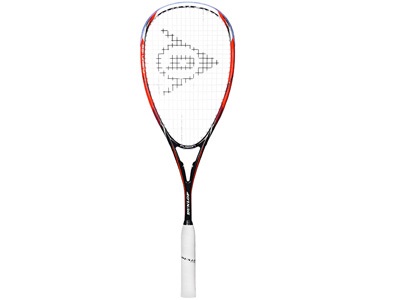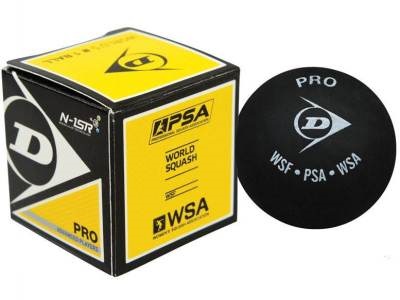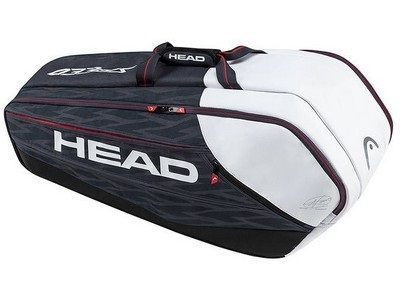

How To Choose a Squash Equipment
Squash is an increasingly popular indoor sport. And if you want to try it too you’ll enjoy it better with the right equipment. However, choosing may not be so easy. The right choice for you will vary according to your skill level and also, for example, different balls have different degrees of speed and rebound force. So what to choose and what to watch out for? You will find everything you need to know in our guide to choosing squash equipment.

Squash equipment
Choosing a squash racket is very important for every player and it can often be difficult. Several factors need to be taken into account, such as skill level or style of play. For beginners, heavier rackets with hand balance are more suitable. For advanced players, lighter rackets balanced in the head.
What is important when choosing a squash racket?
Choosing according to the player's skill
Choosing by your style of play
In addition to skill level, playing style is very important for choosing the right racket. It is in this that each player is different.
Material
The material has an impact on the quality of the game. It is an absolutely fundamental criterion of the racket's parameters, so it is good to know something about it.
Frequently asked questions when choosing a squash racket
Is there a difference between rackets for men and rackets for women?
Usually yes. Men often choose heavier rackets with head balance and a sturdy structure. Women more often choose lighter and more manoeuvrable rackets with hand balance. The construction is usually finer. But it all depends on which racket fits each individual and gender does not play that big a role.
Does the length of the rocket play any role?
The vast majority of squash rackets have a standard length of 685 mm. That is the length according to international rules. Thus, shorter rockets are usually intended for children or beginners.
Choosing the right squash ball is not something that should be overlooked. There are a number of different types and each one is suitable for different players. This, of course, has a big impact on the game. The first thing to be able to distinguish on the balls are the different colors and dots. These indicate the speed of the ball and its rebound force, i.e the length of the rebound.
What is important when choosing a squash ball?
Squash balls by skill level
For beginners, we recommend fast balls with a big bounce. You will have no problem keeping such balls in play, which is ideal for beginners. Over time, you can choose slower balls. How to distinguish balls from each other? At first glance, you will notice different colors and colored dots.
Durability of a squash ball
Squash balls wear out over time. Balls with less rebound wear faster. On average, balls last 2 to 3 months when played 3 times a week. But durability also varies depending on what kind of player you are. The correct time to change the ball is therefore when the rebound is really small or when the ball is visibly damaged.
Frequently asked questions when choosing a squash ball
How to prepare the ball for the game?
Before starting the game, the ball must be preheated to a certain temperature. Otherwise, it will not have the characteristics expected for play. For example, the more heated the ball is, the greater the bounce. So how do you warm the ball? Simply start hitting the ball as hard as you can against the wall. The ball will gradually heat up. The more force you exert, the faster the ball heats up.
What is the difference between a ball with a small bounce and a big bounce?
It is true that faster balls have a bigger bounce. How big is the difference between a small and a big bounce? Generally, a value of about 40% is given. That is quite a lot, so you need to choose your ball very carefully.
Squash bags are an indispensable tool for the transport of squash equipment and its protection. In addition to rackets, you can also pack balls, snacks or something to drink in your bag. You can choose from backpacks, which are more suitable for children, or shoulder bags, which will be appreciated by adults.
What is important when choosing a squash bag?
Volume
Volume is the most important factor when choosing a squash bag. When making your choice, you should think about how many rackets and other equipment you want to transport. Bags for 1 – 2 rackets are suitable for beginners and for more advanced players there are bags that can hold up to 8 rackets. You can also look at the volume, which will tell you how much can be added to the racket bag.
Way of wearing
According to the way of carrying, bags are divided into two types:
Frequently asked questions when choosing a squash bag
I'm just getting started with squash. Which bag should I choose?
For a beginner, small bags will suffice, just for a single racket. You won't use them anyway during the match, so a bigger bag would be just an unnecessary burden. For the vast majority of adults, it is better to wear it over the shoulder, which is practical and comfortable. Backpacks are usually appreciated by young athletes.
Glossary - squash equipment
Sweetspot
The ideal place in the racket to hit the ball with. The larger the size of the head, the larger the sweetspot (ie beginners have a better chance of hitting the ball in the sweetspot). In contrast, Midplus and Midsize rackets have a smaller sweetspot, so players must have perfect control of their technique.
Balance point
The balance point, also known as the balance of the racket, indicates for whom the rocket is intended. It is divided into three basic groups: head balance, center balance and handle balance. It is most often measured in cm, sometimes also stated in mm. Choosing a racket with the right balance according to the player's level can significantly affect the quality of their strokes and the game as a whole.
Racket grip
The grip, or handle, forms the bottom of the racket that the player holds during play. It depends most on its size, as it directly affects the playing technique. Grip is divided into five basic groups and can be referred to as European or American system. European ranges from L0 to L5 depending on size. The American one is measured in inches with the smallest being 4 inches and the largest 4 5/8 inches.
Monoshaft
Monoshaft is one of two types of squash rackets. Unlike a neck racket, it is more suitable for attacking players. It has longer longitudinal strings, which stretch more and throw the ball with more force.
Glossary



